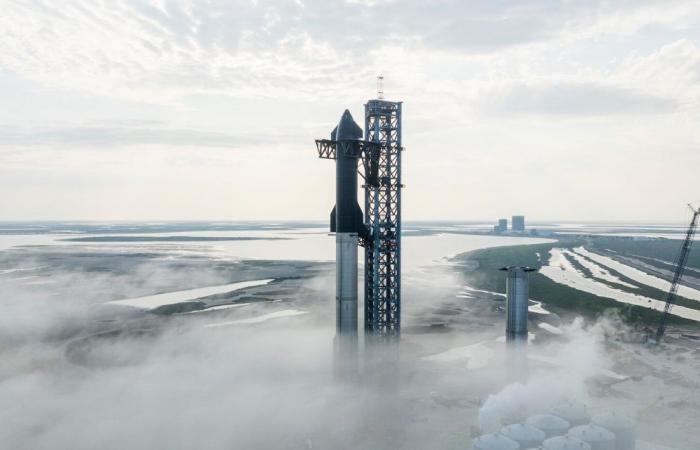SpaceX
SpaceX’s Starship spacecraft on the launch pad
Billionaire SpaceX CEO Elon Musk says he remains completely committed to taking humanity to Mars.
In https://twitter.com/elonmusk/status/1769605796772331537 recent on his X-Twitter profile, Musk reaffirms that his SpaceX’s gigantic Starship spacecraft “was designed to cross our entire solar system and go beyond, to the cloud of objects that surround us”.
Musk is probably referring to Oort Cloudthe gigantic spherical shell of comets that surrounds the solar system.
“A future Starship, much larger and more advancedwill travel to other star systems”, writes the CEO of the aerospace company, adding an even bigger and more ambitious step to his already grandiose vision.
Step by step, Musk has managed to realize (or continue to realize) the dream of taking Humanity further in its space adventure, but SpaceX still has enormous challenges ahead before reaching the stars.
This week, SpaceX successfully carried out Starship’s third orbital launch, this time reaching a height of 233 kilometers and crossing the African continent — before crashing out of control into the Indian Ocean.
Despite the anticlimactic ending, the release was considered a great successmarking a new milestone for the space company in its efforts to develop its super-heavy launch platform.
For Musk, the stainless steel rocket It’s humanity’s ticket to become a interplanetary species long-term.
Naturally, the unpredictable CEO took this week’s launch as an opportunity to offer some characteristically — and perhaps overly — ambitious timelines. “Starship will be on Mars in 5 years“, guaranteed Musk.
To put that timeline into perspective, NASA’s Artemis 3 mission, which will take a Starship with astronauts to set foot on the Moon again, was originally scheduled for 2025 — but was postponed to 2026, recalls The Byte.
That is, before Starship can “traverse our entire solar system and beyond,” SpaceX still have a lot to prove.
To begin with, Musk’s splendid spaceship still needs to achieve reliably enter orbit and return to the ground entirewhich is easier said than done — and has not yet been done.
Furthermore, the company must prove that a Starship can refuel another while in Earth orbit, has to create a life support system for longer trips through the solar system, and still find a way to have enough fuel to reach the destination intended.
If it were up to Musk, future rocket evolutions would be able to cover the 4.2 light years to the closest star to the Sun, Proxima Centauri. But with current technology, covering such a distance would take about 6,300 years terrestrial.
In other words, humanity I would probably have to hibernate (something that seems closer to happening) or reproduce on board to reach another star system.
Except, of course, if SpaceX finds a way to surpass the laws of physics as we know it, and travel at the speed of light — with something like warp drive, which NASA is working on to fall in love years ago, but it remains a possibility for now extremely remote.
Elon Musk is the visionary of bold statements about impossible things that he later manages to achieve, but whether this time he will really take Humanity beyond the planet on which he was born is something that is still only written in the stars.







